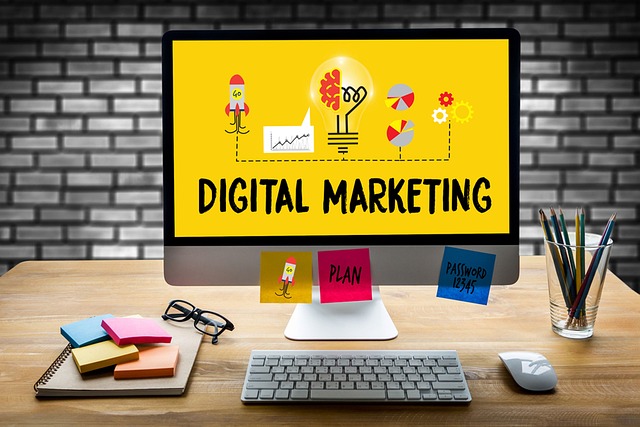-By: Bhavisha Changrani
In the age of digital transformation, shopping has moved from physical stores to e-commerce websites and mobile apps. But now, the future of shopping is evolving once again, and the next frontier is social commerce. As social media platforms continue to expand their functionalities, they are becoming more than just places for social interaction—they are now integral to the shopping experience. This shift is revolutionizing how consumers discover, research, and purchase products, making social commerce an essential part of the modern retail landscape.

What is Social Commerce?
Social commerce is the integration of social media and e-commerce, allowing users to discover and purchase products directly through social platforms without ever leaving the app. It involves everything from in-app shopping on platforms like Instagram and TikTok to live-streamed product demos and shoppable posts that encourage direct purchases. In short, social commerce blurs the line between entertainment, social engagement, and online shopping.
While social commerce has been evolving for years, its rapid growth in 2024 is fueled by several factors, including the increasing use of mobile devices, the rise of influencer marketing, and the demand for more seamless, personalized shopping experiences.
Why Social Commerce is Gaining Traction
Several trends are driving the rapid adoption of social commerce:
A Seamless Shopping Experience
Gone are the days of clicking through multiple pages to make a purchase. Social commerce provides a frictionless shopping experience. Platforms like Instagram, Facebook, TikTok, and Pinterest have introduced features like “shoppable posts,” where users can tap on a product directly within a social feed to see details, pricing, and the option to buy—all within the app. This instant gratification is ideal for today’s fast-paced digital world, where convenience is paramount.
Influencer Marketing & Trust
Influencer marketing is a key driver in the success of social commerce.. Influencers—whether macro, micro, or nano—are seen as trusted figures in the digital space, shaping consumer opinions and preferences. The authenticity and relatability of influencers encourage their followers to take action, including making a purchase. Social commerce capitalizes on this influence by providing a direct path to purchase products recommended by influencers through shoppable content and live streams.
The Power of Visual Content
Social media is inherently visual, and people love to shop based on what they see. Social platforms are designed to be visually engaging, making them the perfect environment for showcasing products. High-quality images, videos, and user-generated content (UGC) draw customers in, helping them visualize the products in their own lives. For instance, platforms like Instagram and TikTok have become go-to destinations for product discovery, with users often browsing feeds for inspiration, only to find a product they can purchase with a few clicks Social Proof and User-Generated Content
Social commerce thrives on social proof. UGC—content created by consumers or fans of a brand—has become an integral part of online purchasing decisions. When users see real people showcasing products, it builds trust. Social commerce platforms encourage this behavior by allowing users to tag brands in their posts, share reviews, and even engage in live-streamed shopping events where viewers can ask questions. In real-time, cultivating a feeling of community and authenticity.

The Role of Live Shopping in Social Commerce
Live shopping, or live-streaming commerce, is one of the most significant developments in the social commerce space. Platforms like TikTok, Instagram, and Facebook are capitalizing on this trend by offering live video features that allow influencers, brands, or even everyday users to showcase products and engage with viewers in real-time. This format combines entertainment with shopping, turning product showcases into interactive events where viewers can comment, ask questions, and purchase directly.
The success of live shopping in markets like China, where it has already become a mainstream way of shopping, is starting to spread globally. In the U.S., major brands and retailers have taken notice, experimenting with live-streamed product launches, behind-the-scenes access, and influencer-hosted sales events. With the ability to drive instant sales and deepen customer relationships, live shopping is poised to be a major part of the social commerce ecosystem.
Social Commerce and the Gen Z Consumer
The rise of social commerce is especially relevant to Gen Z, the first generation of true digital natives. Raised with smartphones in hand and social media as an integral part of their lives, Gen Z expects a shopping experience that is fast, fun, and social. This group is increasingly shopping through platforms like TikTok, Instagram, and Snapchat, where product discovery happens organically through their social feeds, influencer recommendations, and peer reviews.
Gen Z values authenticity and seeks brands that reflect their values, making social commerce an ideal avenue for building deeper connections. This generation is also highly visual, meaning that platforms that allow brands to create engaging, visually-driven experiences are likely to continue growing in importance.
The Future of Social Commerce
As we look toward the future, the potential for social commerce is vast. Here are some key trends to keep an eye on:
Integration with Augmented Reality (AR)
AR technology is already making waves in the retail space, and its integration with social commerce is expected to accelerate. Platforms like Instagram and Snapchat already offer AR features like virtual try-ons, where users can test makeup, clothing, or accessories virtually. As this technology evolves, we’ll likely see even more sophisticated AR experiences, allowing consumers to try products in real-time through their smartphones before making a purchase.

AI-Powered Personalization
Artificial intelligence (AI) is playing a major role in personalizing the shopping experience. With AI-driven recommendations, predictive search, and tailored advertisements, social platforms are able to offer highly personalized shopping experiences to users. As AI continues to evolve, we can expect even more precise product recommendations, leading to higher conversion rates and better customer satisfaction.
Payment Integration and Streamlined Checkout
As social commerce grows, the need for seamless checkout experiences will be crucial. Social platforms are already integrating payment options such as Facebook Pay, Instagram Checkout, and TikTok’s partnerships with e-commerce giants like Shopify. In the future, expect even more streamlined ways to purchase directly from social posts, reducing friction and boosting sales.
Continued Growth of Social Commerce Globally
While social commerce is flourishing in markets like the U.S., Europe, and China, emerging markets are also beginning to adopt these shopping trends. As internet penetration and smartphone usage continue to grow in regions like Latin America, Southeast Asia, and Africa, social commerce will expand globally, bringing new opportunities for brands to tap into these fast-growing markets.

Conclusion
Social commerce is not just a trend—it’s the future of shopping. With its seamless integration of social engagement, influencer marketing, and direct purchasing options, social commerce offers a more dynamic and interactive shopping experience than traditional e-commerce. For brands, this presents an incredible opportunity to connect with consumers in new and meaningful ways. As platforms evolve and new technologies emerge, the future of shopping will undoubtedly be shaped by social commerce, making it an essential strategy for businesses looking to stay ahead in the competitive digital landscape.










